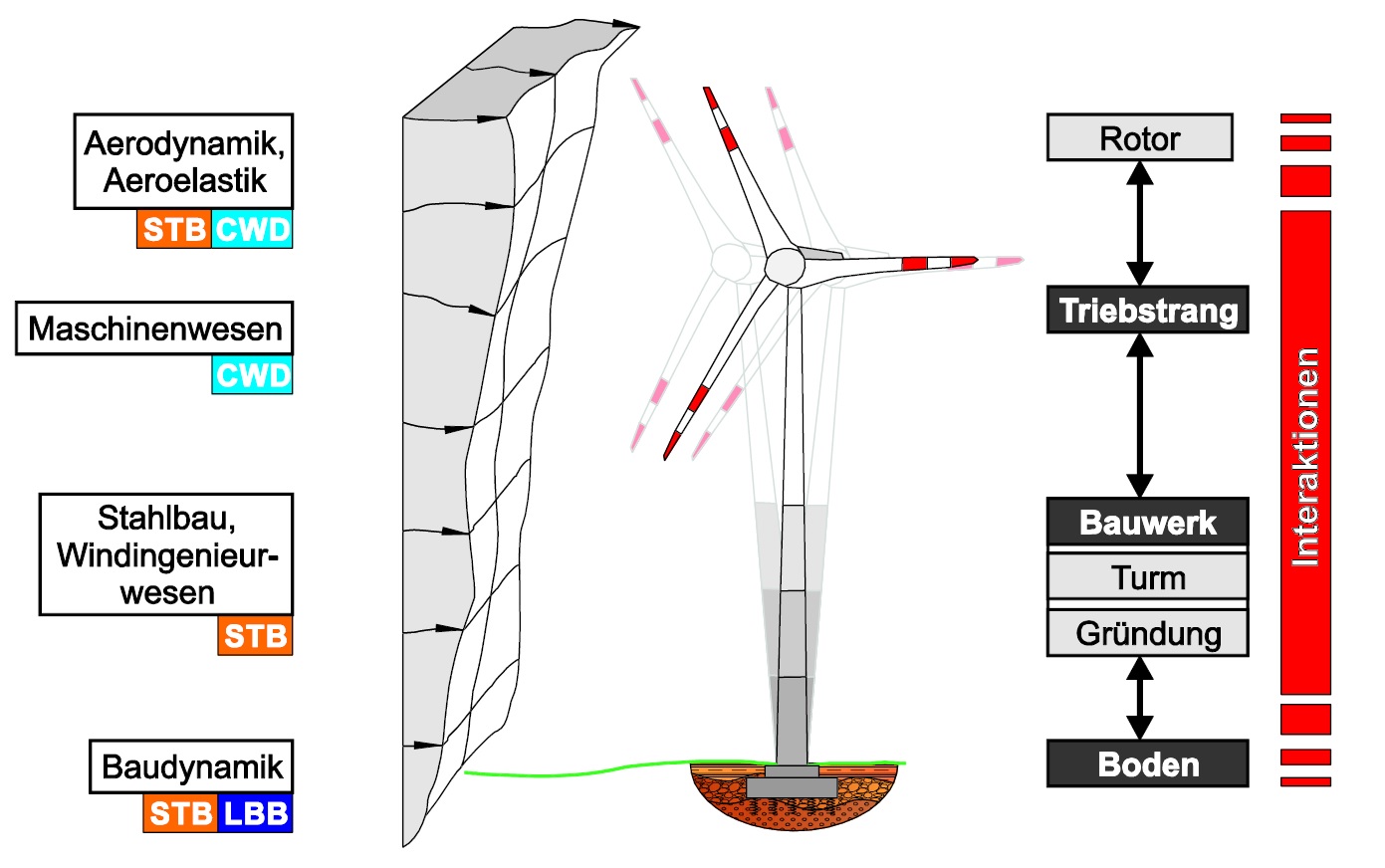Funding: Federal Ministry for the Environment, Nature Conservation and Nuclear Safety
Projectpartner: CWD – Center for Wind Power Drives
Soil-Structure-Power Train Interaction of Wind Turbines
The share of renewable energy from wind turbines (WTG) already represents an indispensable part of the energy supply in Germany. A further expansion of wind energy requires the development of more and more powerful wind turbines with a high degree of efficiency, which must not only be effective but also highly reliable over a sufficient service life. The basis for the design of efficient plants is the structural-dynamic representation of the plant as a complete system, since the oscillating individual components rotor, drive train, tower structure, foundation and ground are in constant interaction in the dynamically stressed system.

The classical design is based on the approach to separate the lowest global natural frequencies of the components and system excitations in the frequency domain so that the natural frequencies do not coincide and have sufficient frequency distances to the low frequency excitations. However, only by considering the system as a whole is it possible to optimally coordinate the system components and consequently increase the economic efficiency by minimizing downtime and maintenance times and improving the fatigue and wear behavior. Current problems with foundations and tower structures show that the described dynamic interaction of the overall system has been insufficiently understood in the past.
The trend towards increasing power yields inevitably leads to ever higher and slimmer tower structures due to larger rotors, which significantly increases the effects of dynamic ground-structure interaction (BBI). Since these also influence the structural dynamic behavior of the tower structure, the soil dynamic effects must be taken into account when analyzing the system response and the behavior of the entire plant. An open question is to what extent the influence of the elasticity and the momentum of the soil-structure system influences the stresses of the drive train. This can only be answered by considering the dynamic soil-structure interaction in the overall system. The necessary information on the transmission and damping behaviour of the tower and the interaction between foundation and soil is currently not completely available. During the design and planning of wind turbines complex models are already used to investigate the dynamic effects and structural loads. These models are available in the individual disciplines (aerodynamics, mechanical engineering, civil engineering) in high degrees of accuracy. However, an interdisciplinary holistic view considering the multiphysical interactions is missing so far. Therefore, there is a need for the development of models with which the complex overall system dynamics can be captured through the coupling of aerodynamics, machine dynamics and building structure. Thus, the project shall make an important contribution to the development of efficient, economical and reliable wind turbines for an environmentally friendly energy supply.
//
